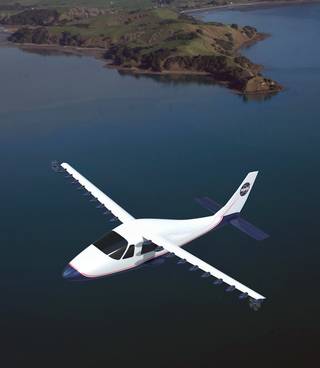
Japan Airlines wants to turn used clothes citizens throw away into jet fuel, with the collaboration of the recycling firm Jeplan and Green Earth Institute.

Swiss adventurer Raphael Domjan has unveiled a two-seater solar aircraft with which he hopes to become the first pilot to fly in the stratosophere.

NASA is committed to transforming aviation by dramatically reducing its environmental impact; improving efficiency, while maintaining safety in more crowded skies; and paving the way for revolutionary aircraft shapes and propulsion.

The first batch of low-carbon jet fuel derived from waste industrial gases from steel mills has been produced for use by UK long-haul carrier Virgin Atlantic, with flight trials scheduled to start in 2017.

Since 2011 the two companies have been committed to producing the world’s first jet fuel derived from waste industrial gases from steel mills via a fermentation process.

In a bid to give wings to its vision of eco-friendly aircrafts, NASA is all set to launch a set of five research projects. These projects are aimed at shrinking fuel use, reducing aviation's impact on the environment and quieting noise around airports.

The green airplane of the future will tackle some of aviation’s biggest environmental challenges including fuel efficiency, noise and plane washing.

Airplanes are a great convenience to society but not to the environment. Luckily, NASA is constructing an electric airplane designed to be more efficient and quiet.
The egg-shaped plane, called Lilium, has been heralded as high up as the European Space Agency. The plane, designed by four German engineers, takes off and lands vertically, meaning it can use helipads.

Solar Impulse 2, the solar-powered plane circling the world, is set to depart from John F. Kennedy International Airport in New York on Monday morning and begin its flight across the Atlantic Ocean.

NASA is often synonymous with space missions but the agency works just as hard at improving aeronautics, making planes faster, cleaner and more secure.

U of T engineers are researching technologies like lightweight materials and flow control, which could potentially improve efficiency, lower costs and reduce emissions in the aviation industry

A successful test flight means that after being grounded in Hawaii for seven months, the Solar Impulse 2 is ready to continue its journey around the world.

This week saw an important milestone for the aviation sector's ongoing efficiency drive with a technical, but important, new regulation taking shape at the specialised UN agency dealing with aviation, the International Civil Aviation Organization (ICAO).